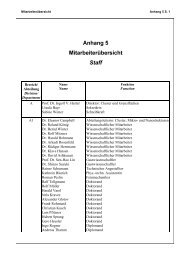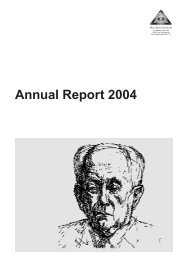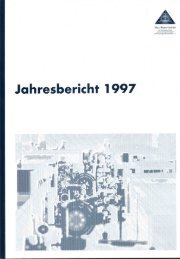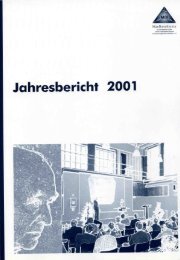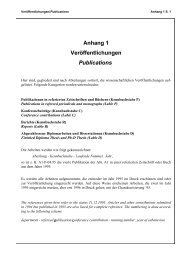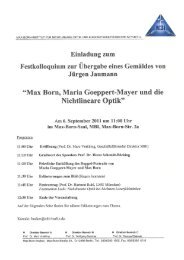Create successful ePaper yourself
Turn your PDF publications into a flip-book with our unique Google optimized e-Paper software.
Fig. 6<br />
A sketch of the influence of the laser<br />
electric field on the potential that<br />
confines an electron to an atom. You<br />
can see why I use the analogy of tipping<br />
a cup of water.<br />
Remember, light is also a wave – a wave of force on a charged particle. As a short laser light<br />
pulse passes an atom, it pushes back and forth on the electron. If it pushes hard enough, the<br />
electron might detach from the ion. Returning to the analogy of water in a glass, the laser pulse<br />
“tips” the glass, first left, then right. If it tips the glass far enough, some of the water might spill<br />
while some would remains in the glass. In the water example we split the water into two parts:<br />
the water that spills and the water that stays in the glass. In the atomic example, we split the electron.<br />
Some of the electron spills (tunnels) from the atom [7] and some of it remains behind.<br />
This very easily solves the first problem – how to split the electron. The electrical field of an<br />
intense light pulse interacting with the electrical forces binding the electron to an atom forms<br />
a beam splitter. The electron is divided into two parts. One part remains bound to the atom<br />
(Ψ g); the other part – called an electron wave packet – moves in response to the force of the<br />
light wave. Figure 7 shows the wave packet emanating from the atom.<br />
If the light pulse that splits the electron contains more than half an oscillation, the fraction of<br />
the electron that remains bound to the positive ion can be “spilled” again and yet again, forming<br />
many wave packets. In other words, the same electron can be split many times.<br />
Once the electron is split, the attraction of the negative electron to the positive ion rapidly<br />
decreases: Since the force that the light exerts on the electron does not depend on how close<br />
the electron is to the ion, the force exerted by the light wave controls the electron wave pakket<br />
motion. At first the light pushes the wave packet away from the ion, but soon the light wave<br />
reverses direction and the force begins to push the electron back [8]. Parts of the wave pakket<br />
return and pass over their first point of origin. In the figure, the motion of the electron is<br />
represented by the red arrow. The figure shows the wave packet sweeping over the ion. In Fig.<br />
7 the wave packet is represented by the symbol Ψ c.<br />
Figure 8 reviews how we have met the first two challenges. Shown on the left is the optical<br />
interferometer, and on the right, the electron interferometer. We have made a beam splitter for<br />
an electron by ionizing the electron with an intense laser pulse. We have found a method to<br />
redirect the electron back to where it came from. There it must interfere with its former self<br />
just like any other wave interferes. This process is often termed a “re-collision.” The term “recollision”<br />
emphasizes the particle-like nature of electrons, while the electron interfering with<br />
itself [9] emphasizes the wave-like nature of the electron.<br />
The final challenge: How can we record the interference? To clarify the answer, I will first take<br />
an interlude to show how intense the re-collision electron can be. The re-collision probability is<br />
large enough to have a major effect. What I show might not come as a surprise. The electron<br />
Bringing the<br />
electron back<br />
<strong>Max</strong> <strong>Born</strong> • Paul Corkum 37



